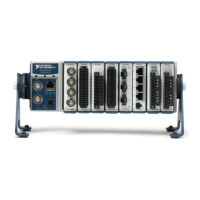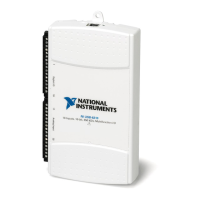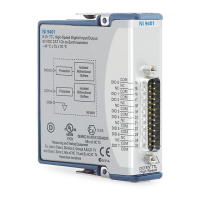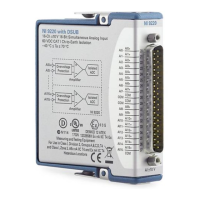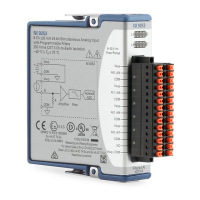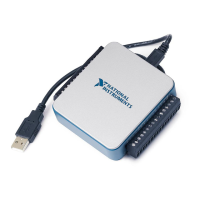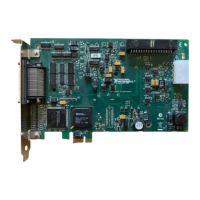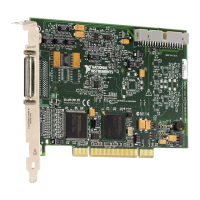Chapter 7 Counters
X Series User Manual 7-22 ni.com
clocked frequency measurement is not dependent on the measured
frequency so at 50 kHz and 5 MHz with a measurement time of 1 ms
the error % will still be 0.001%. One of the disadvantages of a sample
clocked frequency measurement is that the frequency to be measured
must be at least twice the sample clock rate to ensure that a full period
of the frequency to be measured occurs between sample clocks.
Table 7-5 summarizes some of the differences in methods of measuring
frequency.
For information about connecting counter signals, refer to the Default
Counter/Timer Pinouts section.
Period Measurement
In period measurements, the counter measures a period on its Gate input
signal after the counter is armed. You can configure the counter to measure
the period between two rising edges or two falling edges of the Gate input
signal.
You can route an internal or external periodic clock signal (with a known
period) to the Source input of the counter. The counter counts the number
of rising (or falling) edges occurring on the Source input between the
two active edges of the Gate signal.
Table 7-5. Frequency Measurement Method Comparison
Method
Number of
Counters
Used
Number of
Measurements
Returned
Measures High
Frequency
Signals
Accurately
Measures Low
Frequency
Signals
Accurately
Low frequency with
one counter
1 1 Poor Good
High frequency with
two counters
1 or 2 1 Good Poor
Large range of
frequencies with
two counters
2 1 Good Good
Sample clocked
(averaged)
1 1 Good Good
Artisan Technology Group - Quality Instrumentation ... Guaranteed | (888) 88-SOURCE | www.artisantg.com
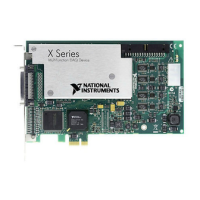
